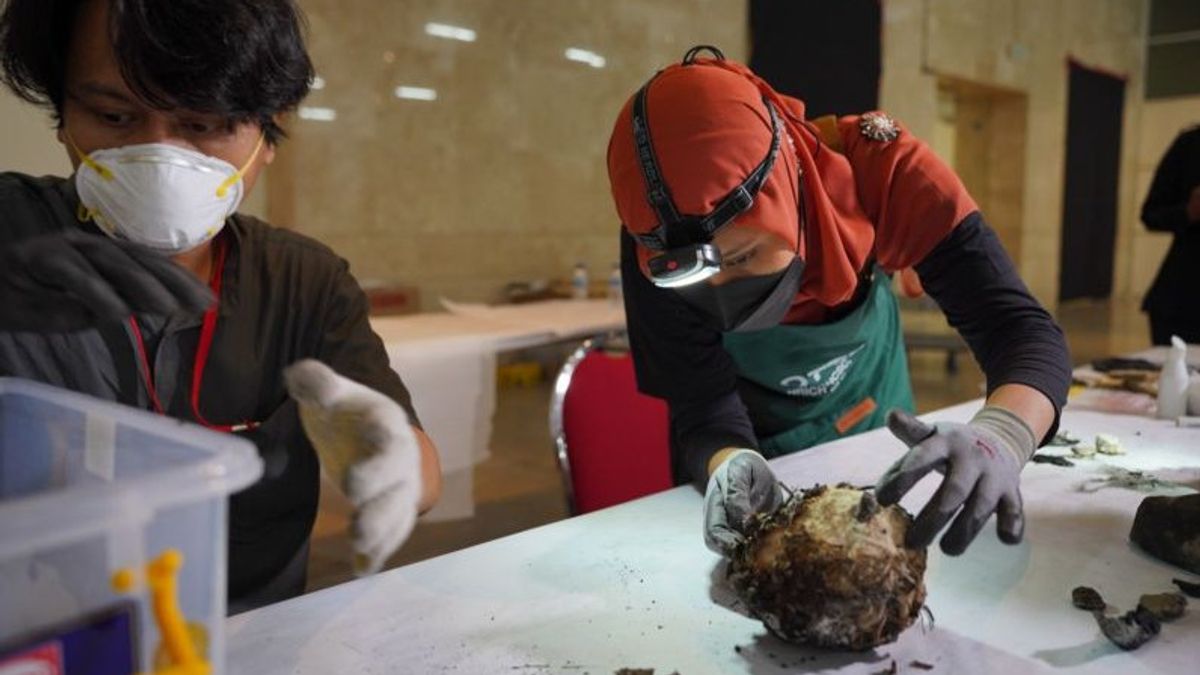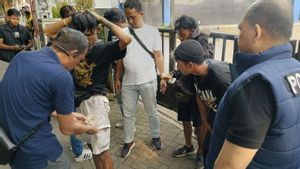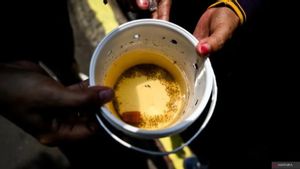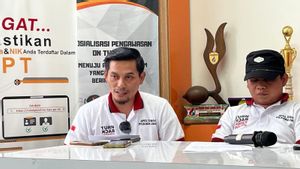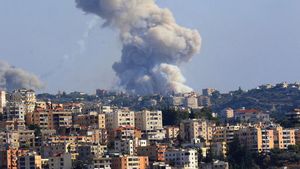JAKARTA - Acting Head of the Public Service Agency for Museums and Cultural Conservation (MCB) which oversees the MNI unit, Ahmad Mahendra, said the Special Team for Handling the Indonesian National Museum Unit (MNI) needed the next two weeks to evacuate and identify collectibles affected by building fires.
"The estimate is that the MNI Collection Rescue Evacuation Team will need the next two weeks to complete the initial evacuation and identification process. This is our priority," Mahendra said in a statement quoted by ANTARA, Friday, September 22.
However, he stressed that the MNI Collection Rescue Rescue Team was committed to the best possible rescue and evacuation priority and did not sacrifice the condition of the collection which had partially been damaged. Thus, the process is not left behind in the orientation of the target time
Mahendra said that in the last few days, more than 60 officers consisting of the Evacuation Team, Identification Team, and the Conservation Laboratory Team in collaboration with more than 100 personnel from the Police and the Handling of Public Infrastructure and Facilities (PPSU) of the DKI Jakarta Regional Government have worked tirelessly.
After being allowed rescue of the collection affected four days ago (16/9), their hard work spirit was reflected in the achievement of identifying 126 collections of historical objects based on data obtained on Wednesday (20/9).
This number is still increasing to this day and does not include the part or fragment of the collections found and successfully evacuated.
VOIR éGALEMENT:
The MNI Collection Rescue Evacuation Team continues to struggle every day to ensure that all collections can be evacuated from affected locations. As for the process of handling the collection of affected historical objects, there are four stages that have been passed.
The first is the evacuation process, followed by the identification process. After the data collection is carried out in the second process, namely early stage identification, the collection of historical objects will enter the next stage of the third stage, namely the classification process.
The classification process is a stage to determine the level of damage to the collection of affected historical objects so that the fourth stage, namely handling for recovery, can be adjusted to the needs.
These stages are very technical and complex and require strategies that ensure the safety of the collection and the team that runs them. This entire process will be used as a report to prepare a restoration and security plan in the future.
"We continue to fight from morning to night every day, although there are still areas that are not safe from the risk of collapsed buildings. Our priority is to ensure the evacuation process runs smoothly and progressively every day," said Mahendra.
In handling it, it relies on a special team group that is skilled in the technique of transporting using heavy equipment carefully.*
The English, Chinese, Japanese, Arabic, and French versions are automatically generated by the AI. So there may still be inaccuracies in translating, please always see Indonesian as our main language. (system supported by DigitalSiber.id)
